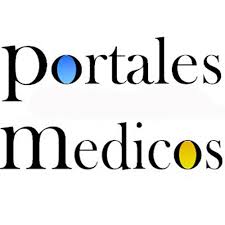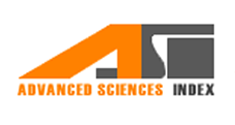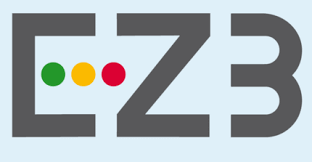Displasia epifisiaria múltiple: un hallazgo radiológico casual como clave diagnóstica
Multiple epiphysiary dysplasia: a casual radiological finding as a diagnostic key
Resumen
La Displasia Epifisaria Múltiple es una alteración genética que afecta el crecimiento y remodelación del hueso; está caracterizada por una anomalía en el desarrollo de las epífisis y deformidades óseas que afectan a las articulaciones y provocan artrosis tempranas en los niños. Las manifestaciones suelen aparecer entre los dos y 10 años de edad; se pueden detectar en pacientes de estatura baja, con deformidades epifisarias que dan lugar a disfunción articular en forma de dolor, rigidez y/o limitación al movimiento, particularmente en edad adulta, pudiendo pasar desapercibida durante la infancia. El tratamiento es sintomático y los aspectos claves son diagnóstico precoz, reposo, analgesia, seguimiento y prótesis de cadera en los casos de artrosis. El objetivo de este trabajo es presentar un caso clínico cuyo diagnóstico fue realizado a partir de un hallazgo radiológico casual posterior a un traumatismo Se trata de preescolar masculino de cinco años, a quien se le determina diagnóstico posterior a traumatismo en miembro inferior izquierdo, en vista de hallazgos radiológicos anormales como hallazgo casual. Se resalta la importancia de la historia clínica en displasias esqueléticas con manifestaciones mínimas para lograr el diagnóstico correcto, tratamiento oportuno y detección precoz de posibles complicaciones, con el fin de mejorar el pronóstico a largo plazo del afectado.
Multiple Epiphyseal Dysplasia is a genetic alteration that affects bone growth and remodeling; is characterized by an anomaly in the development of the epiphyses and bone deformities that affect the joints and cause early osteoarthritis in children. Manifestations usually appear between two and 10 years of age; they can be detected in patients of short stature, with epiphyseal deformities that give rise to joint dysfunction in the form of pain, stiffness and/or limitation of movement, particularly in adulthood, and may go unnoticed during childhood. The treatment is symptomatic and the key aspects are early diagnosis, rest, analgesia, follow-up and hip replacement in case of osteoarthritis. We present the case of a 5-year-old male preschooler, in whom a diagnosis was made after trauma to the left lower limb, in view of abnormal radiological findings as a casual finding. The importance of clinical history in skeletal dysplasias with minimal manifestations is highlighted to achieve the correct diagnosis, timely treatment and early detection of possible complications, in order to improve the long-term prognosis of the affected person.
Palabras clave
Texto completo:
PDFReferencias
Bajuifer, S. y Letts, M. (2005). Multiple epiphyseal dysplasia in children: Beware of overtreatment! J Can Chir, 48(2), 127-135. https://www.ncbi.nlm.nih.gov/pmc/articles/PMC3211605/pdf/20050400s00007p106.pdf
Barreda-Bonis, A., Barraza-García, J., Parrón, M., Pastor, I., Heath, K. y González-Casado, I. (2018). Multiple SLC26A2 mutations occurring in a three-generational family. Europ. J. Med. Genet. 61, 24-28. doi: 10.1016/j.ejmg.2017.10.007.
Beighton, P. (1990). Inherited disorders of the skeleton (2a ed). New York, EE. UU: Churchill Livingstone.
Borrego, E., Farrington, D. y Downey, F. (2014). Novedades en displasias óseas. Revista española de Cirugía Ortopédica y Traumatología, 58(3), 171-181. doi:10.1016/j.recot.2013.12.001.
Briggs, M., Brock, J., Ramsden, S. y Bell, P. (2014). Genotype to phenotype correlations in cartilage oligomeric matrix protein associated chondrodysplasias. European Journal of Human Genetics, 22, 1278–1282. 10.1038/ejhg.2014.30.
Calabuig-Muñoz E., Muñoz-Guillén M., Valero-Sanz J. y García-Borrás J. (2003). Displasia Epifisaria Múltiple Familiar. REEMO, 12(4), 78-9.
Chueca, M., Berrade S. y Oyarzabal, M. (2008). Talla baja y enfermedades raras. Anales Sis San Navarra, 31(2), 31-53. https://scielo.isciii.es/pdf/asisna/v31s2/original4.pdf
Ho, T., Tran, L., Hoang, L., Doan, P., Nguyen, T., Nguyen, T. y Luong, A. (2020). A novel p.A191D matrilin-3 variant in a Vietnamese family with multiple epiphyseal dysplasia: a case report. BMC. Musculos Kelet, 21(1), 216. doi: 10.1186/s12891-020-03222-4
Ibáñez-Toda, L. y Marcos-Salas M. (2015). Abordaje de la talla baja. En AEPap (Ed). Curso de Actualización Pediatría (pp 85-94). Madrid, España: Lúa Ediciones 3.0. https://www.aepap.org/sites/default/files/cursoaepap2015p85-94.pdf
Maghnie., M., Labarta, J., Koledova, E. y Rohrer, T. (2018). Short Stature Diagnosis and Referral. Front. Endocrinol, 8(8), 374. doi: 10.3389/fendo.2017.00374
Mäkitie, O., Geert R., Mortier, G., Czarny-Ratajczak, M., Wright, M., Suri, M., Rogala, P., Freund, M. y Cole, W. (2004). Clinical and Radiographic Findings in Multiple Epiphyseal Dysplasia Caused by MATN3 Mutations: Description of 12 Patients. Am J Med Genet, 125A:278-284
Online Mendelian Inheritance in Man, OMIM®. (2021). Johns Hopkins University, Baltimore, MD. MIM Number: 132400: 01/19/2021. https://omim.org/.
Pozo, J., Martos-Moreno, G. y Argente, J. (2005). An Pediatr Contin, 3(4): 205-13
Stanescu, R., Stanescu, V., Muriel, M., y Maroteaux, P. (1993). Multiple Epiphyseal Dysplasia, Fairbank Type: Morphologic and Biochemical Study of Cartilage. Am J Med Genet, 45:501-507.
Treble, N. y Jensen, F. (1990). Development of the hip in Multiple Epiphyseal Dysplasia. J Bone Joint Surg Br, 72-B(6): 1061-1064. doi: 10.1302/0301-620X.72B6.2246289
Vanlommel, J., Vanlommel, L., Molenaers, B. y Simon, J. (2018). Hybrid total hip arthroplasty for multiple epiphyseal dysplasia. Orthop Traumatol Surg Res, 104(3): 301-305. doi: 10.1016/j.otsr.2017.11.014
Vasques, G., Andrade, N. y Jorge, A. (2019). Genetic causes of isolated short stature. Arch Endocrinol Metab, 63(1), 70-78. doi:10.20945/2359-3997000000105.
Enlaces refback
- No hay ningún enlace refback.
Depósito Legal Electrónico: ME2016000090
ISSN Electrónico: 2610-797X
DOI: https://doi.org/10.53766/GICOS
| Se encuentra actualmente registrada y aceptada en las siguientes base de datos, directorios e índices: | |||
 | |||
 |  |  |  |
 |  | ||
 |  |  |  |
 |  |  |  |
 |  |  |  |
 |  | ||
![]()
Todos los documentos publicados en esta revista se distribuyen bajo una
Licencia Creative Commons Atribución -No Comercial- Compartir Igual 4.0 Internacional.
Por lo que el envío, procesamiento y publicación de artículos en la revista es totalmente gratuito.

